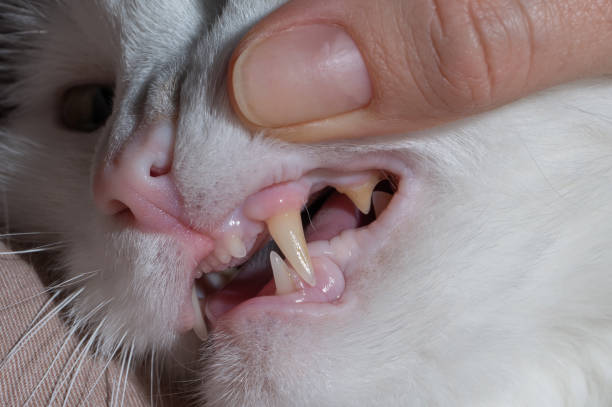Cats are beloved companions in many households, requiring proper care to maintain their health and well-being. Dental health is among the most critic
Cats are beloved companions in many households, requiring proper care to maintain their health and well-being. Dental health is among the most critical aspects of care for cats, as it can prevent the development of several dental diseases, including tooth resorption. Tooth resorption is a painful condition that can lead to tooth loss and severe oral infections. This article will discuss the importance of dental care for tooth lesions in cats and how it can help reduce the risk of tooth resorption.
What is Tooth Resorption?
Tooth resorption is a common dental complaint among cats and is characterized by the destruction or weakening of tooth structure. Various factors, such as trauma, infection, or genetics, can cause this condition. It results in the gradual erosion of the enamel and dentin layers within a cat’s teeth, leading to cavities, exposed nerves, and eventual loss of teeth. Additionally, tooth resorption can cause intense pain for affected cats.
What Causes Tooth Resorption?
The exact cause of tooth resorption in cats is not fully understood. Still, it may be caused by a combination of factors, including genetics, diet, environmental factors such as poor oral hygiene, or trauma to the teeth or gums. Additionally, some underlying medical conditions, such as kidney disease, can also contribute to the development of tooth resorption in cats.
How Can Dental Care Reduce Risk?
Regular dental care is essential for preventing or slowing down the progression of tooth resorption in cats. A veterinarian should examine a cat’s teeth at least once annually to check for signs of early decay and address any issues identified before they worsen. In addition to regular exams, dental cleanings are recommended every 6-12 months, depending on your cat’s individual needs. Cleanings remove plaque and tartar buildup, which contributes to bacterial growth, leading to decay and infection. Additionally, regular brushing with an appropriate brush and pet-safe toothpaste can help reduce risks associated with tooth resorption and other oral diseases like periodontal disease.
Other Ways to Prevent Tooth Resorption
In addition to regular dental exams and cleanings, there are other ways that owners can help reduce their cat’s risk for developing tooth resorption:
• Feeding your cat a balanced diet high in calcium and phosphorus is essential for maintaining healthy teeth and gums. Choose foods specifically formulated for cats with good quality ingredients like proteins, vitamins, and minerals that are essential for strong teeth and gums
• Provide toys or treats specifically designed for cleaning your cat’s teeth, such as chew toys or treats that have been proven effective at reducing plaque buildup on teeth
• Avoid treats with added sugar which can contribute to plaque buildup on teeth
Conclusion
Tooth resorption is a severe condition affecting many cats yearly, but it can be prevented with proper dental care. Regular exams with your veterinarian are essential for spotting signs of early decay before they worsen, so treatment options can be pursued quickly if necessary. In addition to regular exams, brushing your cat’s teeth regularly with an appropriate brush and pet-safe toothpaste and providing toys specifically designed for cleaning your cat’s teeth will help reduce their risk of developing this painful condition. Finally, providing your cat with a balanced diet high in calcium and phosphorus will also help keep its mouth healthy over time!

COMMENTS